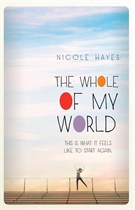Despite completing my first read-through of The Double a few weeks back, it has taken me considerable time to bring my thoughts together and I suspect I’ve subconsciously put off tackling this review because of the sheer complexity and cleverness of the themes.
Melbourne born Maria Takolander is a senior lecturer in literary studies and creative writing so it comes as no surprise that she uses allusion to great effect. The stories in this collection carry titles from earlier narratives such as ‘The Obscene Bird of Night’ (a novel by the Chilean writer Jose Donoso), ‘Paradise Lost’ (John Milton’s epic blank verse poem), ‘The War of the Worlds’ (H.G. Wells’ popular sci-fi novel) and those titles provide the link to Takolander’s themes.
I don’t mean to suggest that you can’t enjoy these perfectly crafted stories if you don’t have an intimate knowledge of the earlier literary figures. In fact, Takolander’s tales carry a momentum and thoughtful contemplation on their own merit. To do justice to them in a critical review though…well, that’s something else again. Nevertheless, here I am giving it my best shot.
The doppelgänger motif of the title story comes from Fyodor Dostoyevsky’s 1846 novella ‘The Double’ and the schizophrenia and portentousness of Dostoyevsky’s tale is portrayed brilliantly here from the opening mystery of a woman waking confused and dishevelled, on wet grass with her lower half submerged in water to the puddle she returns to seeing “a stranger there in the mirrored surface, her pale face muddied, her body bound in white sheeting.” (78)
The morning after witnessing his parents’ drunken violence, the narrator in ‘The Red Wheelbarrow’ heads off to a “nine o’clock tutorial on William Carlos Williams”, (12) the modernist poet who penned the poem commonly referred to as ‘The Red Wheelbarrow’. Takolander seems to be saying something about the search for meaning in life (and perhaps the meaninglessness of it) through the analysis of poetry:
I found the question sheet and sat at my desk. ‘In poems such as “The Red Wheelbarrow”’, I read, ‘William Carlos Williams strips the world bare of meaning. Discuss.’ I looked out of the window above my desk and into the backyard. The sky was cloudless, and the air was still. (27-28)
Takolander’s imagery and simile unfurl with seductive ease:
“The midnight sun was glowering on the horizon, and mosquitoes bumped against her bedroom window like tiny ghosts.” (64) [The Double]
“The room would become black, and the silence in the receiver would thicken until I felt I was connected to some dark place underground.” (133) [The Interpretation of Dreams]
“There is firmer land somewhere. Land where cattle stamp the soil with cloven hooves. Where horse hair is torn against barbed fences. Where colossal windmills slice the air. But that is not here.” (30) Tatiana has skin that may be beautiful behind her veil or may be “pocked like the creek mud” (32) and Svetlana has “the hems of her black pants hectic around her ankles.” (41)[Three Sisters]
Where Part One of this collection consists of eight distinct short stories, Part Two meanders along a different path. Takolander won the 2010 ABR short story competition with ‘A Roankin Philosophy of Poetry’ a kind of absurdist look at academia (I think) and she extends the theme here with ‘Roankin and the Judge of the Poetry Competition’, ‘Roankin and the Research Assistant’ and ‘Roankin and the Librarian’. I’m not sure that I fully appreciated this second Part (at least not to the extent of part one) but Takolander does give her humour full rein:
The garden shed abutted a homely chicken coop, and I had been living there comfortably, beneath a picturesque series of power lines, ever since. (203)
—————-
Roankin’s last words outlining the Roankins’ philosophy of poetry sung on the page like a plague of locusts granted only twenty-four hours to copulate before they die. (203-204)
The intriguing cover design by WH Chong perfectly mirrors [pun intended] the book’s contents and, as it sits beside my keyboard now, it seems to be daring me to hunt down a copy of Dostoyevsky’s ‘The Double’ and then revisit Takolander’s take on the theme.
BOOK DETAIL
Takolander, Maria. The Double, The Text Publishing Company, Melbourne, 2013.
ISBN: 9781922079763
This review is cross posted at ANZ LitLovers.


